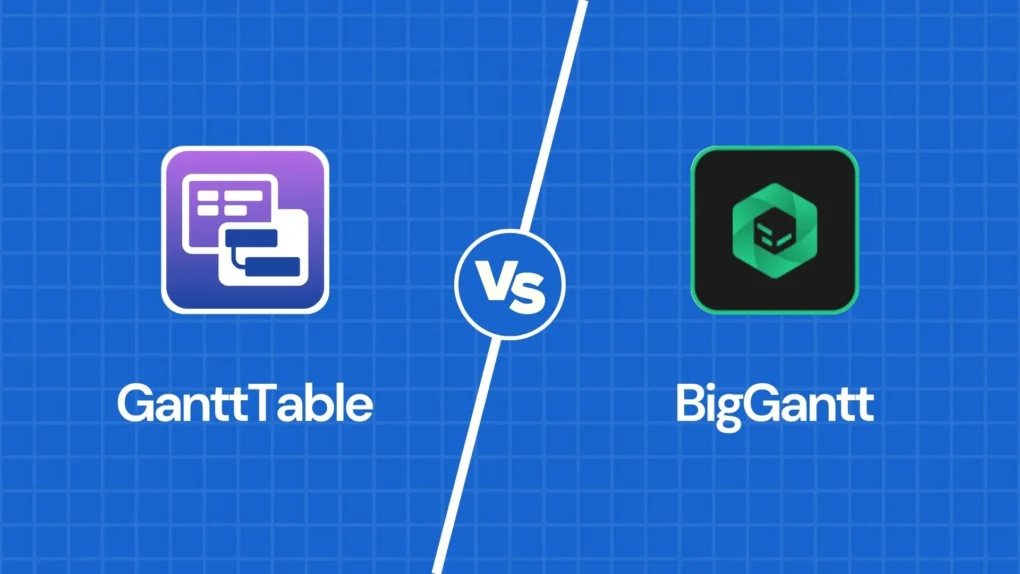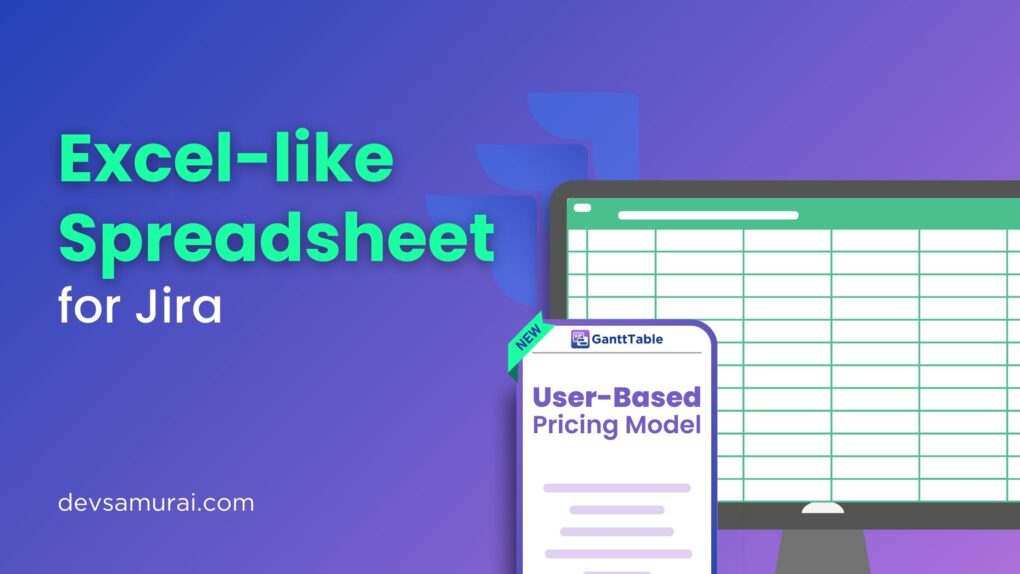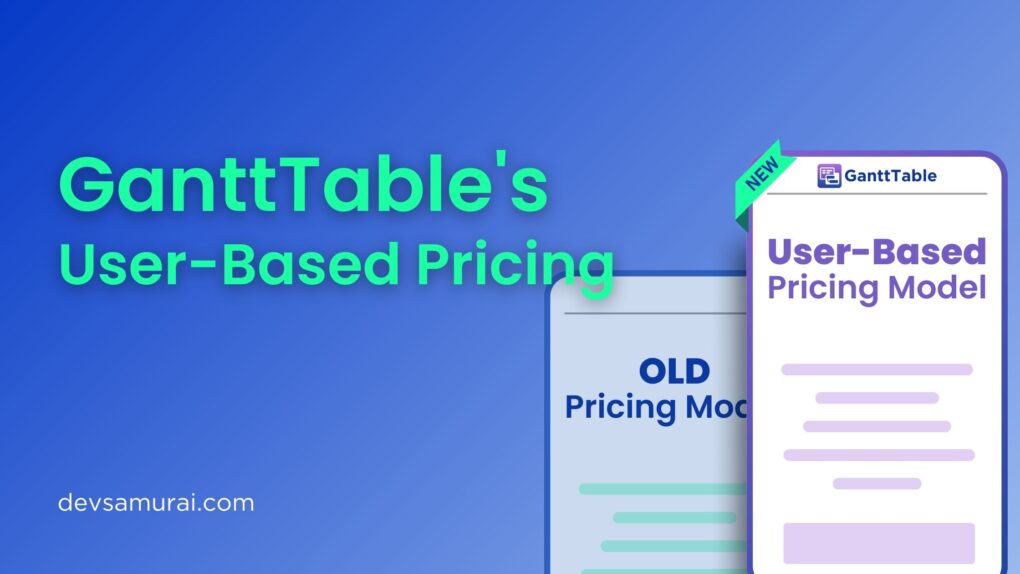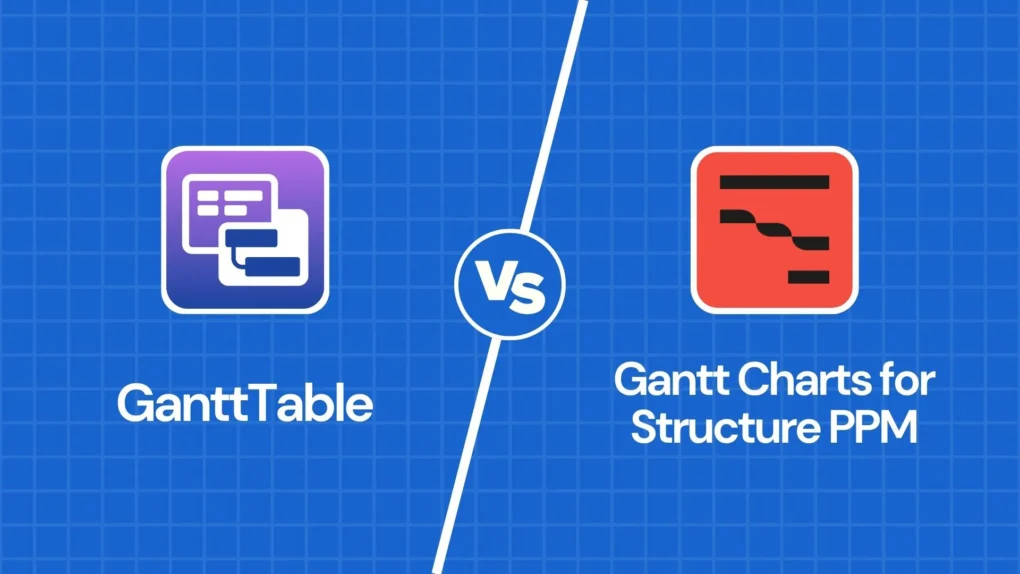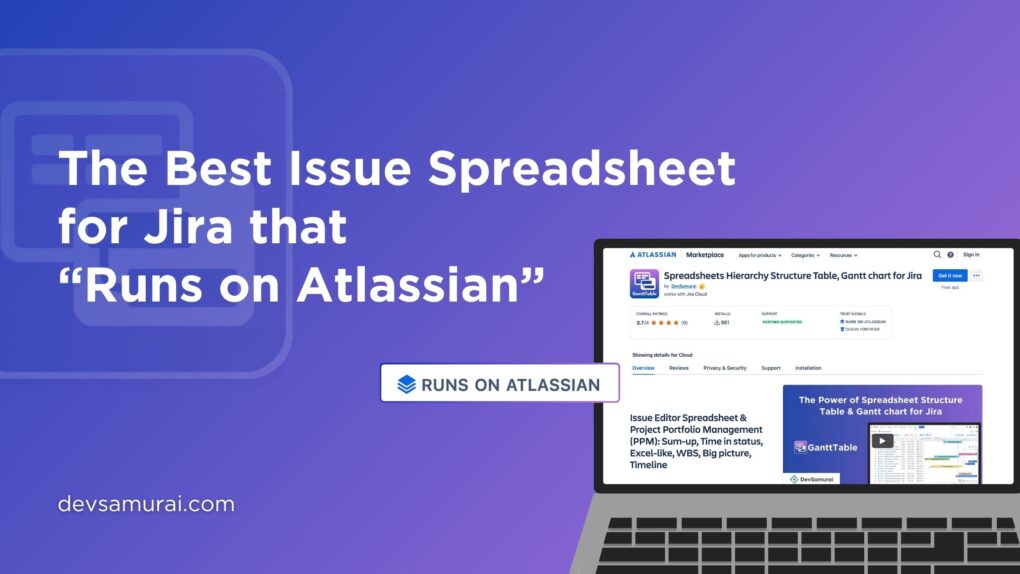Jira has become the backbone of project management for countless agile teams around the world. Its flexibility, powerful workflows, and integrations make it the go-to tool for software development, IT, and business operations. But there’s one recurring challenge Jira users face: visualizing projects with a Jira Gantt chart.
A Gantt chart is essential for scheduling, dependency tracking, and timeline management. While Jira offers some timeline views, they often fall short of the full Excel-like Gantt experience that many project managers need. That’s where GanttTable for Jira comes in.
In this article, we’ll explore why Gantt charts are critical in Jira, how GanttTable brings advanced scheduling abilities to the platform, and why Atlassian’s new user-based pricing model makes it more affordable than ever to equip your team with the right tools.
Why Gantt charts are important in Jira
Project planning is rarely straightforward. Teams must coordinate multiple tasks, balance resources, and ensure deadlines are realistic. This is where Gantt charts shine.
A Jira Gantt chart allows teams to:
- Visualize the entire project timeline in one view.
- See how tasks connect and depend on one another.
- Identify bottlenecks before they derail progress.
- Reallocate resources quickly when priorities shift.
- Track deadlines across multiple projects.
Unfortunately, Jira’s built-in tools don’t always deliver the flexibility project managers expect. While roadmaps and timelines provide a high-level overview, they lack the Excel-like, detailed scheduling capabilities that traditional Gantt charts offer.
For teams that want the best of both worlds—Jira’s agile environment plus full-featured Gantt charting—GanttTable for Jira provides the missing piece.
Here comes GanttTable, an outstanding Jira Gantt chart
GanttTable for Jira is a powerful app that combines a familiar, spreadsheet-like table with advanced Gantt chart abilities. It’s designed for teams that need more than simple lists and timelines — teams that want to manage projects in depth, across multiple layers, while still staying in Jira.
With GanttTable, project managers and team leads can:
- View issues in a structured table alongside a visual Gantt chart.
- Create and customize task hierarchies to reflect real workflows.
- Track progress across multiple projects in one view.
- Balance workload and adjust dependencies with drag-and-drop ease.
The result? A tool that feels as natural as a spreadsheet, but with the full power of Jira data underneath.
Advanced Gantt abilities of GanttTable
What makes GanttTable stand out isn’t just that it adds a Gantt chart to Jira. It’s how deeply customizable and powerful those Gantt abilities are. Let’s break down the highlights.
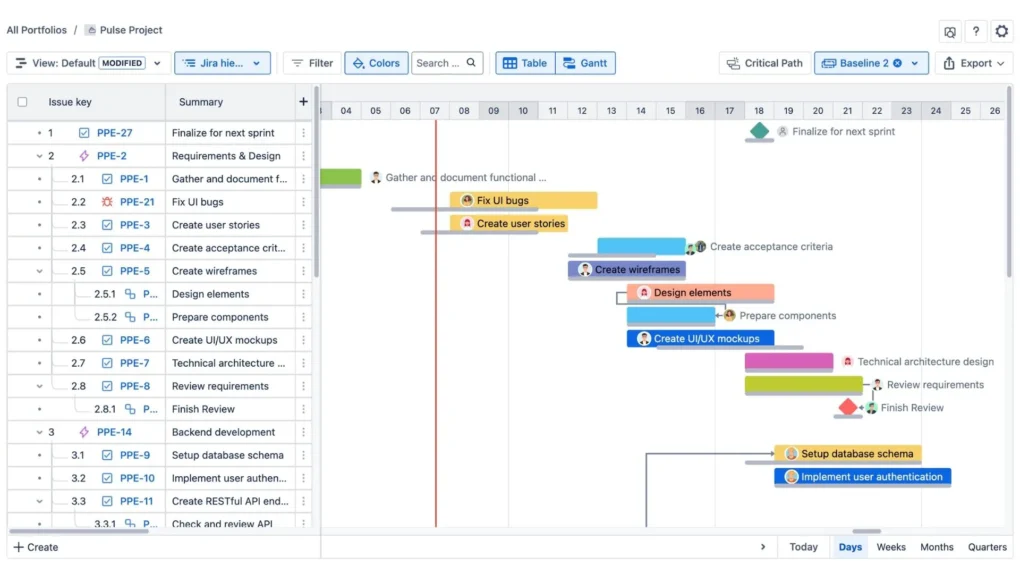
1. Baseline tracking
Every project starts with a plan, but few unfold exactly as expected. With GanttTable’s baseline feature, you can lock in your original schedule and later compare it to actual progress.
This side-by-side view highlights delays, early completions, or scope shifts. As a result, project managers can quickly spot where work is slipping and provide realistic updates to stakeholders.
2. Auto-scheduling for dependencies
Dependencies often create headaches when a single task delay ripples through the entire project. GanttTable solves this with auto-scheduling. When one task shifts, the tool automatically adjusts all dependent tasks.
This ensures timelines are accurate, reduces manual updates, and ensures the project plan reflects reality with minimal effort.
3. Milestone visualization
Milestones represent critical checkpoints such as product launches, approval deadlines, or release dates. In GanttTable, milestones are visually distinct on the chart, standing out from regular tasks.
This makes it easy for teams to focus on the big picture and track how everyday work contributes to achieving major project goals.
4. Visual sprint and version duration
For agile teams, balancing short-term sprints with long-term schedules can be challenging. GanttTable bridges the gap by overlaying sprint and version durations directly onto the Gantt chart.

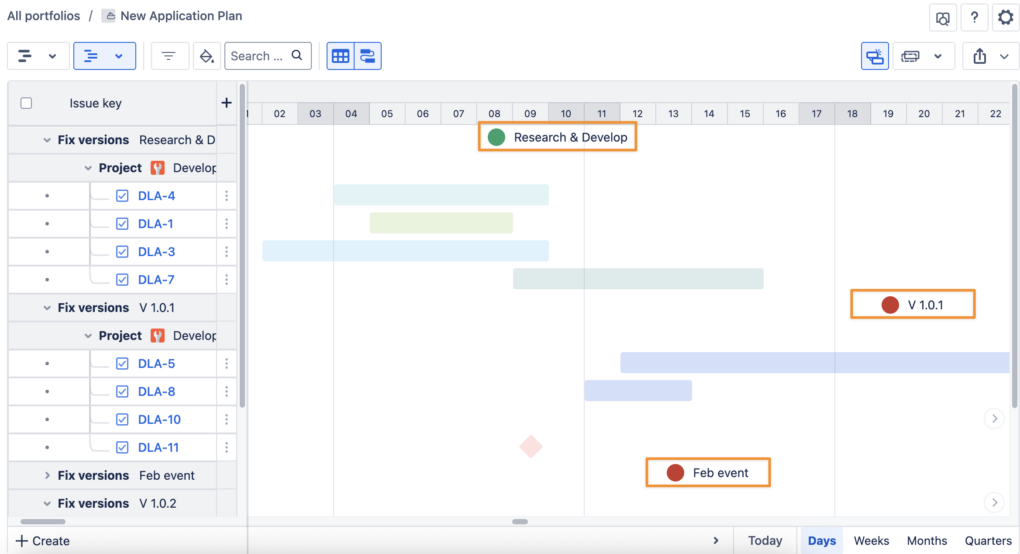
This way, you can see how iterative cycles fit into the overall project roadmap, ensuring better alignment between agile delivery and long-term strategy. For more details about this feature, please visit GanttTable’s release notes.
5. Reusable views for efficiency
Project managers often repeat structures across projects. With GanttTable, you can save views and reuse them later. That means less setup time and more consistent planning practices.
Atlassian’s new user-based pricing model
Until now, app pricing in Jira was “coupled” — meaning it was tied to your entire Jira user base, even if only a fraction of people needed the app.
Starting in late 2025, Atlassian is rolling out a new user-based pricing model. This modern approach ensures you only pay for the active users who actually use the app.
For teams adopting GanttTable, this means:
- More flexibility — assign the app only to project managers and planners.
- More fairness — no wasted licenses.
- More cost savings — especially in large organizations.
GanttTable pricing example
So, what does this mean for GanttTable? The best part is that it’s priced at just around $4 per active user per month.
Let’s look at a quick example:
Imagine your Jira instance has 200 users, but only 10 actually need GanttTable. Under Atlassian’s new pricing model, you only pay for those 10 users. In contrast, many other apps still require licenses for the full 200-user tier.
Here’s how the numbers play out:
- GanttTable: 10 users × $4 = $40/month
- Other apps: 200 users × $1.50 = $300/month
The difference is striking. With GanttTable, teams gain access to advanced Jira Gantt chart capabilities while keeping costs tightly aligned with actual usage. No more overspending on unused licenses.
Conclusion
Jira is an outstanding project management platform, but when it comes to Gantt charts, it has always needed a boost. GanttTable for Jira provides exactly that: a robust, Excel-like Jira Gantt chart tool that empowers teams to plan, track, and deliver with confidence.
With Atlassian’s new user-based pricing model, adopting GanttTable has never been more affordable or flexible. At just $4 per user, you can give your project managers the tools they need to keep projects on track — without paying for unused licenses.
If your team is ready to take Jira project planning to the next level, it’s time to explore GanttTable for Jira.

